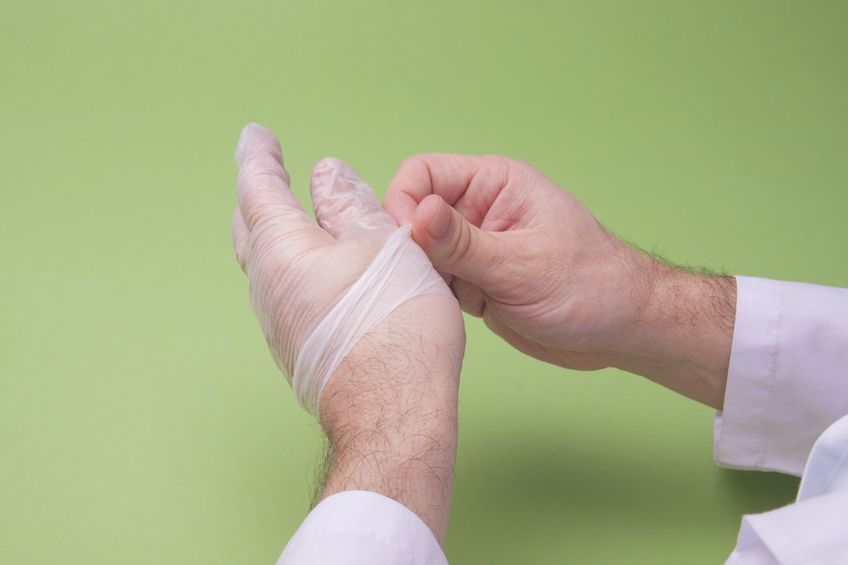Understanding Latex Allergy — Symptoms and Treatments

While latex allergy can be serious, allergic reactions are rarely fatal. If you experience symptoms of a latex allergy, it’s important to avoid or limit contact with latex products.
People at a higher risk for experiencing a latex allergy include:
- Those with food or hay fever allergies
- Health care workers who frequently use latex gloves
- Patients who have experienced multiple surgeries
- Rubber industry workers who are frequently exposed to natural rubber latex
An allergist can help you diagnose and treat a latex allergy. Consult with your allergist and learn more about latex allergy symptoms and treatments so you can live a normal and symptom-free life.

What Is Latex?
Natural rubber latex originates from the sap of the rubber tree (aka Hevea brasiliensis) found in Southeast Asia and Africa. People can develop an allergic reaction to products with latex when they become sensitive to proteins found in natural rubber latex.
Natural rubber latex differs from synthetic rubbers made with chemicals. Synthetic rubber products don’t have the natural latex proteins and won’t trigger allergic reactions for people with latex allergy.
What Products Contain Latex?
Latex is often found in medical and dental offices, but can also be found in your home. Common latex products include:
- Disposable gloves in medical or dental offices
- Medical adhesive tapes used for dressing wounds
- Catheters
- Syringes
- Contraceptives
- Rubber bands
- Balloons
- Baby bottle nipples or pacifiers
- Diapers
- Feminine pads
- Rubber toys
- Mouse pads for computers
- And more
If you experience reactions to these or other products containing rubber latex, it’s best to avoid contact whenever possible.
Latex Allergy Symptoms and Diagnosis
Common latex allergy symptoms can range from minor to life-threatening. These symptoms may include:
- Rash, inflammation, hives, or itching on the skin
- Mild respiratory reaction: coughing, sneezing, or a runny nose
- Severe respiratory reaction: shortness of breath, swelling of the throat, or wheezing
- Anaphylaxis, a life-threatening allergic reaction requiring immediate medical attention
Symptoms often occur within minutes after contact with the allergen. Most symptoms occur after direct contact with latex. In other cases, inhaling latex proteins in the air can cause asthmatic reactions in latex allergy sufferers.
Latex Allergy Management
How do you manage a latex allergy? Allergists will review your medical history and conduct tests and physical exams. Blood tests can detect if allergic reactions to latex occur.
Treatment for Latex Allergy
Avoiding contact with latex is the most effective way to treat latex allergy. Use hypoallergenic non-latex gloves when needed and avoid breathing air where powdered latex is present.
Some medications may help relieve allergic symptoms. If serious, life-threatening symptoms occur, you should seek immediate medical attention. Carry an epinephrine pen as a safeguard if you’ve experienced severe latex reactions in the past.
Are you suffering from allergic reactions to latex? Schedule a consult with one of our board certified allergists for diagnosis, treatment options, and management of a latex allergy so you can avoid further symptoms.
